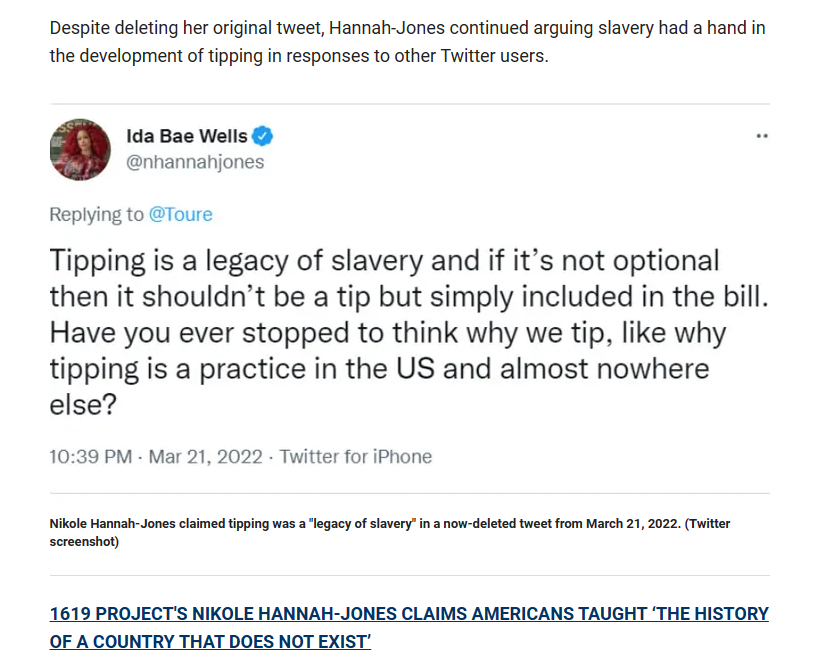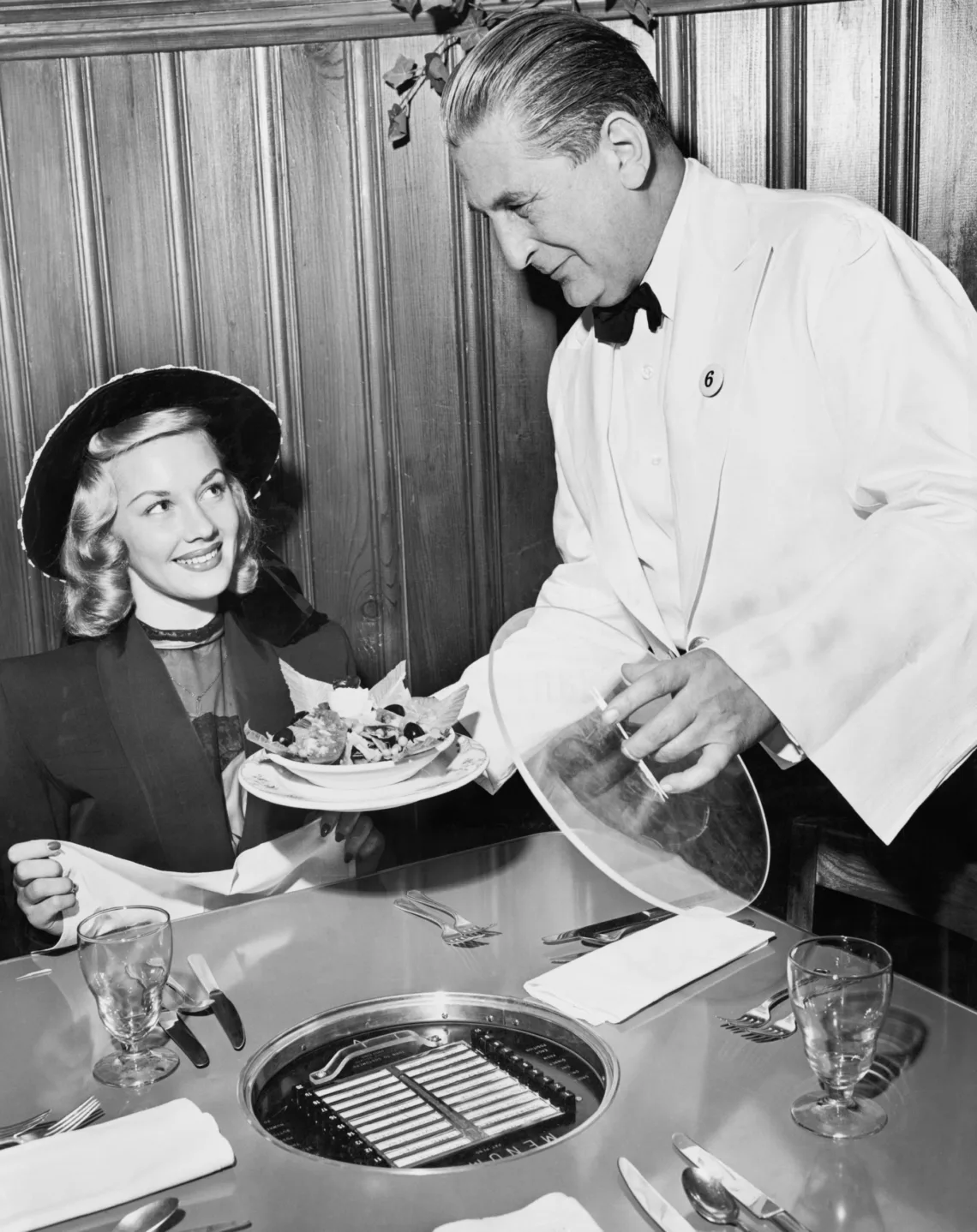In 2020, it was estimated that there were over a million restaurants in the US, as many as around a quarter of Norway’s population. Nevertheless, NRK’s Tove Bjørgaas and her team managed to find a restaurant where the customers have to pay 23 percent in compulsory tips, while the staff are miserable Generation X’s who believe tips are a legacy from slavery.
It is no coincidence that NRK is at the Brassica restaurant. It is in a suburb of liberal Boston, which is located in what is considered America’s most liberal state, Massachusetts.
It is NRK’s modus operandi to seek out the America that can best reflect the image they want to convey to Norwegians, and they have done that brilliantly this time as well. They never disappoint.
You can’t make this stuff up, but NRK does
More and more restaurants in the US require mandatory tips of 20 percent or more, writes Bjørgaas. The American tipping culture is out of control, some say.
The US correspondent does not refer to real figures, which is very common in the Norwegian media, but the Brassica restaurant and the employees support her claims.
NRK has of course selected one of over 1 million restaurants and a dozen employees out of 15.5 million who work in the restaurant industry, then portrays it as being typical of the USA.
Bjørgaas writes that after the pandemic, Brassica’s owner Rebecca Kean and the neighbouring restaurant introduced a new regime where they add 23 percent in tips to all bills – an administration fee of 20 per cent and a kitchen fee of 3 per cent.
There is a long way between the 1 May slogans in the USA, Bjørgaas writes further, about the third world and the backward country USA. Instead, restaurant owners like Rebekka Kean have started a kind of rebellion against an outdated wage system to make it fairer. The fees are distributed between the kitchen staff and those serving.
The tipping culture is abhorrent, we learn; it is also unfair, discriminatory and a legacy of slavery. In addition, it is about the muzzle factor and Rebekka Kean wants to bring this culture to life.
For those of us who have worked in the restaurant industry, we hardly believe what we read. But there are more people in the comments section on NRK’s Facebook page who believe in Bjørgaas’ fable and why shouldn’t they? Norwegians who do not know the USA and have never been here, will of course believe that the picture NRK presents is true. There was a time when I myself thought that everything NRK said about Norway was true.
Statskanalen indoctrinates many Norwegians and shows a picture of the USA that is completely unfamiliar to us who live here. It is a betrayal of those who trust that they give a nuanced picture.
Snout factor is only if you work at Hooters
We address one by one of the claims about the restaurant profession in the USA mentioned above and the first is that it is about the nose factor, which is absolutely not true, at least not in the majority of restaurants. Of course, if you work at Hooters or Rachel’s Gentlemen’s Club, it will be different. But the ordinary man and woman who goes to a restaurant in the United States wants good service and good food and drink; not Ken and Barbie.
I’ve worked with people in restaurants from all walks of life, races and nationalities and those who are friendly and go the extra mile to provide great service are the ones who go home after a shift with the most tips.
Bjørgaas further writes that in several states, restaurants feel forced to introduce such fees because the minimum wage for employees is set. In the state of Massachusetts, where Brassica operates, the minimum wage is barely $15.
Barely 15 dollars, writes the US correspondent, without considering that it is not far from the minimum wage for some professions in Norway and that Massachusetts has an income tax of 5%.
As of 2022 figures from the Norwegian Labor and Welfare Authority, the minimum wage for the service industry is NOK 179.94 (US$16.87). For those under 18, it is NOK 141.84 (US$13.30) and for 16-year-olds NOK 118.08 (US$11.07).
For cleaning, it is NOK 204.54 (US$19.18) for those over 18 and NOK 153.55 (US$14.40) for those under.
Another lie from the 1619 project and Nikole Hanna-Jones
The next claim from Bjørgaa’s article should have been complained to the PFU, because it is a pure and blatant lie and is about how the tipping culture started in the USA.
This started because some industries did not want to pay their employees a salary they could live on. It is a legacy from the slave era, says restaurant owner Rebekka Kean.
No sources, no elaboration of this rather serious statement and Bjørgaas gives her readers the least possible to once again portray the USA as a racist country.
Are tips from the slave era? – asks Phillip W. Magness from the American Institute of Economic Research. He has already answered us in the headline, The 1619 Project Lies Again.
That tips are a legacy of slavery is the latest claim from Nikole Hannah-Jones, creator of the New York Times’ 1619 Project, writes Magness. In a tweet, she wrote that tipping is legacy of slavery, exactly the same words Bjørgaas uses: a legacy after slavery. Hanna-Jones asks why tipping is a practice in the US and almost nowhere else.
Hannah-Jones deleted the tweet but still claims the tip comes from the slave era.

Screenshot Fox News
As her 1619 project, she rewrites history, because the tip cultures are not a legacy from slavery, but from Europe.
It is not the first time that the 1619 project has made bizarre claims that try to connect mundane aspects of everyday life to slavery, writes Magness. After researching Hannah-Jones’s theory, he discovered that it has recently become a trendy talking point on the far left. Noone is surprised.
Magness writes that, like much of the 1619 Project’s purpose, the reason for this narrative is to use the fake story to call for raising the minimum wage. They use the injustices of the past and the horrors of slavery as a tool to enact progressive policies in the present.
Magness’s research is thorough and interesting – and a long read. Fact-checkers and the 1619 Project fundamentally distort the history of tips, which began long before the American Civil War and the end of slavery.
The practice of tips or gratuities was widespread in late mediaeval Europe, especially in Tudor England (1485-1603).
Over time, the practice of tipping expanded in Europe and tips fulfilled a clear economic function. Eventually, tips became a common practice for a number of professions – from meals in restaurants, to hotel service and a penny for musicians.
It is unclear when the tip culture arrived in the United States, but it was long before the Civil War and is evidenced in older journals, and has nothing to do with the slave era. Magness writes that it was probably the European settlement that brought the custom to the North American continent.
Readers of old media deserve better
The restaurant industry in the US is not perfect and much could be improved, also when it comes to tipping culture. From my own experience, I know that we and most people who have worked in restaurants prefer tips, because you often earn far more than the minimum wage.
There are plenty of jobs in other industries that make you feel like slaves, so stories that Bjørgaas presents are not only incorrect, but yet another attempt at left-wing propaganda to advance a cause for the easily offended and put the United States in a negative light.
Over 60 percent of American adults have worked in the restaurant industry, the profession is a lifesaver for many who are in college, need a flexible schedule, are between jobs, or simply enjoy the service industry. Restaurants in the United States employ over 15.5 million people.
Over 40 percent of restaurants are owned by minorities — compared to 30% of businesses in the overall private sector — and they employ more minority managers than any other industry.
Waiters at full service restaurants earn a median of NOK 270 (US$25.31) an hour, while the top quarter earn over NOK 400 (US$37.51) an hour and the bottom quarter NOK 190 (US$17.81).
But NRK does not care about such numbers and positive stories. Because, as in the USA, Nikole Hanna-Jones’ 1619 project and tips from the slave era are also trendy talk on the far left in Norway.
It is as Magness writes: The brutality of slavery is selectively used to promote an ideological cause. The unsuspecting readers of legacy media and its self-appointed fact-checkers deserve better.

